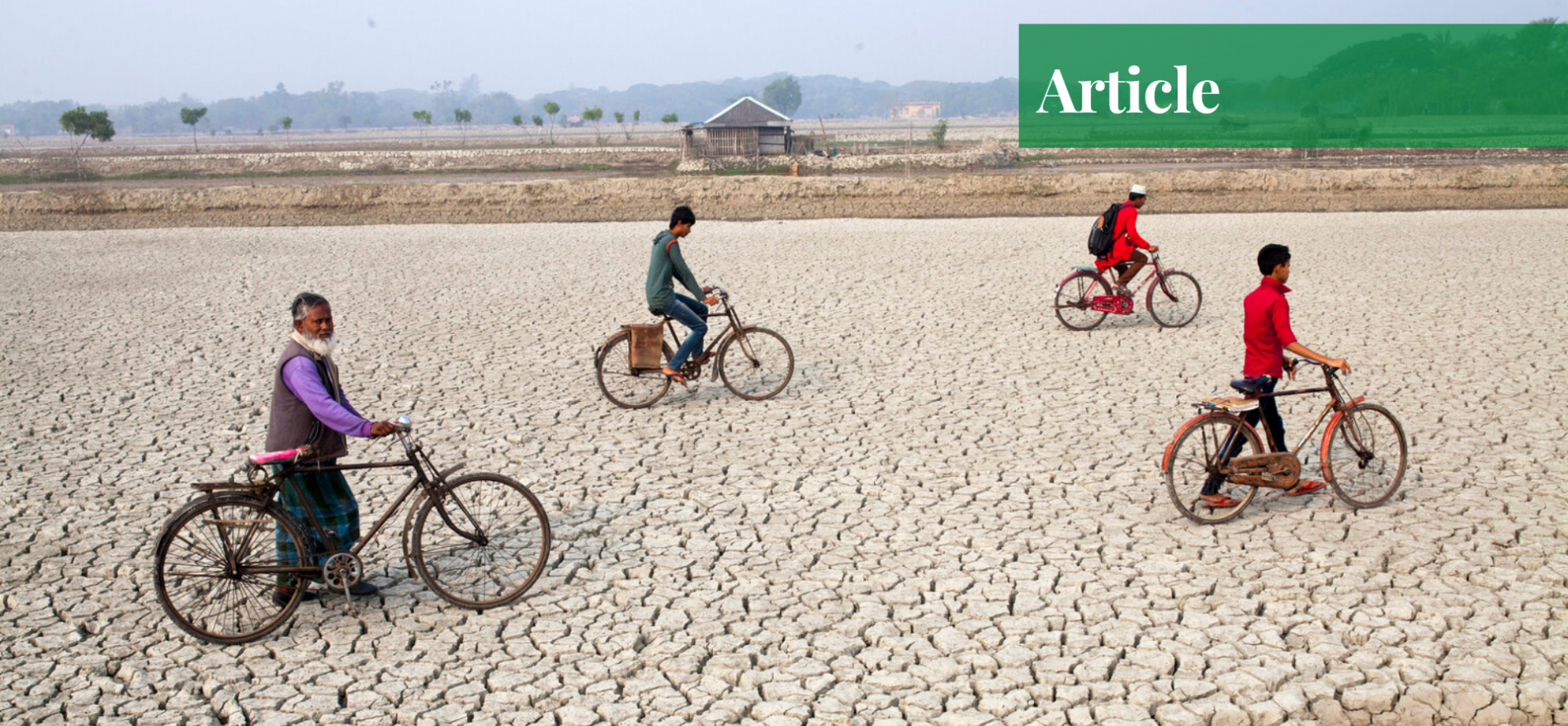Omair Farooq Khan has a master's degree in International Relations from Hungary. He is working as a freelance researcher and writes analytical and research articles for online sources. His areas of research include environmental peacebuilding, natural resource governance in post-conflict societies, climate change and migration, and the theories of international relations.
Introduction
Migration or the movement of people is not a new phenomenon, rather it has been a way of life for human beings to adjust themselves to a particular environmental condition; when these conditions get altered they move. During the last three decades, the phenomenon of migration has been accelerated and climate change is one of the main reasons. Although it took time to link the two but migration owing to climate change is not a new phenomenon, particularly in states like Pakistan. Rather, migration is as old as climate change itself and environmental issues.
One such illustration has been done by Jared Diamond in his book “Collapse”, which shows how the changing climate made the Maya civilization migrate and eventually disappear from central America because the Maya people could not resist drought and long dry seasons. Similarly, changing climate has been highlighted as one of the reasons for the destruction of the Indus Valley civilization at Mohenjo-Daro (modern-day Larkana), Pakistan.
However, the link between migration and climate change has been ignored until now. The link between climate change and migration has only been acknowledged most recently. It has been proved from case studies of countries like Syria, Yemen, Central African countries, and Pakistan.
Migration in Pakistan
Most recently Pakistan has become one such country where climate change is forcing people to move—in search of livelihood, food, water, and shelter—and get settle in nearby towns or cities. As climate change has become severe and more evident, intra-state migration in Pakistan has been increasing with each passing day.
While addressing the causes of migration across the world, Frank Laczko and Christine Aghazarm highlighted four main causes of the migration trend in their book “Migration, Environment, and Climate Change: Assessing the Evidence”, and these four reasons are as follows:
- Intensification of natural disasters
- Extreme weathers
- Sea level rise
- Competition over natural resources.
In the case of Pakistan, intensification of natural disasters and extreme weather are the main reasons behind unseasonal rains, floods, and drought across the country. They eventually drive people out of their hometowns and cause them to migrate to nearby towns and cities.
Extreme Weather and Water Crisis
Pakistan lies at the foot of the Himalayan and Karakoram mountain ranges, which are home to the highest number of non-polar glaciers. These mountain ranges have the world’s most extensive river system, supported by the Indus river originating from the Tibetan plateaus. Unfortunately, Pakistan also faces severe drought in parts of Baluchistan and Sindh which leaves tens and thousands of people with no option but to migrate towards cities in search of livelihoods.
The World Resources Institute also showed concern about the water scarcity in Pakistan, as Pakistan falls among the category of “extremely high stress” countries. If the water shortages continue to follow the same pattern, migration and urbanization will exacerbate, and eventually, lead to conflicts, civil strife, or systemic horizontal inequalities in parts of the country.
Moreover, national authorities such as the Pakistan Council of Research in Water Resources (PCRWR) have already reported that Pakistan will become an “absolute water-scarce” country by 2025. The extreme weather and the water shortages are already impacting national agriculture productivity. According to a World Bank report, the agriculture sector of Pakistan used to accommodate 43.6% workforce of the country and contributed 21% to the total national GDP before the floods of 2010, which has dropped the sector’s contribution to less than 38% and 18% respectively.
Linking Climate Change with Migration
Three decades ago the Intergovernmental Panel on Climate Change (IPCC) warned that “the greatest single impact of climate change could be on human migration.” Since the 1990s, there has been an acknowledgment of the relationship between climate change and conflicts or civil wars.
Studies have shown that climate-induced migration leads to competition over natural resources and overpopulation owing to rural-urban migration, which eventually leads to systemic ethnic inequalities, religious or tribal tensions. Pakistan is no exception to this fact.
Extreme weather, owing to changing climate, has the potential to stress the traditional livelihood resources of the people and force them to migrate to nearby towns or cities. The main causes behind climate induced-migration are droughts and non-seasonal rains. Reports have shown that the floods of 2009-10 have witnessed the largest climate-induced migration in the history of Pakistan as nearly two million people have been displaced and some have moved to urban areas since 2010.
Moreover, Pakistan is predominantly an agricultural country where agriculture accounts for 91.6% of the total water resources, and over 60% of the population is involved in the agriculture sector. A slight change in the number, or any minor crisis, can immediately have extraordinary consequences for the agriculture products, as witnessed during the last couple of years.
Recommendations
With such a diverse climate and landscape, Pakistan has several opportunities to tackle these extreme weather conditions and to better address rapid urbanization and intrastate migration. There is an urgent need to build new large and small dams across the country, on a national security basis. It will reserve the freshwater coming from glaciers for dry seasons and simultaneously divert the water during the monsoon rains.
The wrath of heavy floods and soil erosion during monsoons can be reduced through an extensive campaign of afforestation. Additionally, Pakistan should focus on the production of electricity from renewable sources such as solar and wind energy, and reduce its reliance on oil and fossil fuels. It will reduce the rising temperature in the northern areas which severely impacts the melting rate of glaciers.
Likewise, the problem of population growth should also be addressed at the national level, so that the government would know the rate of supply and demand before exporting agricultural products such as wheat, sugar, or cotton. Furthermore, the government should also focus on improving the efficiency of the outdated canal and river systems which are the main reason behind wastage and seepage of water across the country.
Conclusion
The countrywide floods of 2009-10 were a warning signal for Pakistan that climate change is severely impacting its agriculture which is forcing people, mostly in rural areas, to migrate to nearby towns or cities. This climate-induced migration is impacting the already stressed livelihood recourses in cities and it will lead to competition over available resources.
Moreover, the changing climate in Pakistan has already started to impact agricultural produce such as wheat, cotton, and sugar. Therefore, it is high time for the government to take immediate steps and make constructive policies to address the issue of climate-induced migration, due to its potential to destabilize the food and human security of the country.
If you want to submit your articles and/or research papers, please check the Submissions page.
The views and opinions expressed in this article/paper are the author’s own and do not necessarily reflect the editorial position of Paradigm Shift.


















